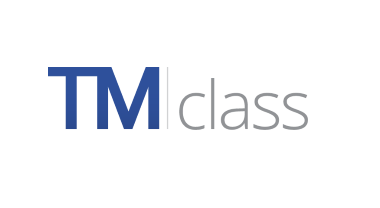Importance of Nice Classification
The Nice Agreement, concluded at Nice in 1957, revised at Stockholm in 1967 and at Geneva in 1977, and amended in 1979, establishes a classification of goods and services for the purposes of registering trademarks and service marks (the Nice Classification).
The competent offices of the Contracting States must indicate in official documents and in any publication, the issue in respect of the registration of marks the numbers of the classes of the Classification to which the goods or services for which the mark is registered belong.
The Nice Agreement created a Union, which has an Assembly. Every state that is a member of the Union and has adhered to the Stockholm Act or the Geneva Act of the Nice Agreement is a member of the Assembly. Among the most important tasks of the Assembly is the adoption of the biennial program and budget of the Union.
There are in total 45 classes in the Nice Classification where Classes 1 to 34 are characterized as goods and 35 to 45 are categorized as services. Each of the countries party to the Nice Agreement is obliged to apply the Nice Classification in connection with the registration of marks, either as the principal classification or as a subsidiary classification, and has to include in the official documents and publications relating to its registrations of marks the numbers of the classes of the Classification to which the goods or services for which the marks are registered belong.
Use of the Nice Classification is mandatory not only for the national registration of marks in countries party to the Nice Agreement but also for the international registration of marks effected by the African Intellectual Property Organization (OAPI), the African Regional Intellectual Property Organization (ARIPO), the Benelux Office for Intellectual Property (BOIP), the European Union Intellectual Property Office (EUIPO) and the International Bureau of WIPO. The Nice Classification is also applied in a number of countries not a party to the Nice Agreement.
Classes and their description
Class 1: Chemicals for use in industry, science, and photography, as well as in agriculture, horticulture, and forestry; unprocessed artificial resins, unprocessed plastics; fire extinguishing and fire prevention compositions; tempering and soldering preparations; substances for tanning animal skins and hides; adhesives for use in industry; putties and other paste fillers; compost, manures, fertilizers; biological preparations for use in industry and science.
Class 2: Paints, varnishes, lacquers; preservatives against rust and against deterioration of wood; colorants, dyes; inks for printing, marking, and engraving; raw natural resins; metals in foil and powder form for use in painting, decorating, printing, and art.
Class 3: Non-medicated cosmetics and toiletry preparations; non-medicated dentifrices; perfumery, essential oils; bleaching preparations and other substances for laundry use; cleaning, polishing, scouring, and abrasive preparations.
Class 4: Industrial oils and greases, wax; lubricants; dust absorbing, wetting, and binding compositions; fuels and illuminants; candles and wicks for lighting.
Class 5: Pharmaceuticals, medical and veterinary preparations; sanitary preparations for medical purposes; dietetic food and substances adapted for medical or veterinary use, food for babies; dietary supplements for human beings and animals; plasters, materials for dressings; material for stopping teeth, dental wax; disinfectants; preparations for destroying vermin; fungicides, herbicides.
Class 6: Common metals and their alloys, ores; Metal materials for building and construction; transportable buildings of metal; non-electric cables and wires of common metal; Small items of metal hardware; metal containers for storage or transport; safes.
Class 7: Machines, machine tools, power-operated tools; motors and engines, except for land vehicles; machine coupling and transmission components, except for land vehicles; agricultural implements, other than hand-operated hand tools; incubators for eggs; automatic vending machines.
Class 8: Hand tools and implements, hand-operated; cutlery; side arms, except firearms; razors.
Class 9: Scientific, research, navigation, surveying, photographic, cinematographic, audiovisual, optical, weighing, measuring, signaling, detecting, testing, inspecting, life-saving, and teaching apparatus and instruments; apparatus and instruments for conducting, switching, transforming, accumulating, regulating or controlling the distribution or use of electricity; apparatus and instruments for recording, transmitting, reproducing or processing sound, images or data; recorded and downloadable media, computer software, blank digital or analog recording and storage media; mechanisms for coin-operated apparatus; cash registers, calculating devices; computers and computer peripheral devices; diving suits, divers’ masks, earplugs for divers, nose clips for divers and swimmers, gloves for divers, breathing apparatus for underwater swimming; fire-extinguishing apparatus.
Class 10: Surgical, medical, dental, and veterinary apparatus and instruments; Artificial limbs, eyes, and teeth; orthopedic articles; suture materials; therapeutic and assistive devices adapted for persons with disabilities; massage apparatus; apparatus, devices, and articles for nursing infants; sexual activity apparatus, devices, and articles.
Class 11: Apparatus and installations for lighting, heating, cooling, steam generating, cooking, drying, ventilating, water supply, and sanitary purposes.
Class 12: Vehicles; apparatus for locomotion by land, air, or water.
Class 13: Firearms; ammunition and projectiles; explosives; fireworks.
Class 14: Precious metals and their alloys; jewelry, precious and semi-precious stones; horological and chronometric instruments.
Class 15: Musical instruments; music stands and stands for musical instruments; conductors’ batons.
Class 16: Paper and cardboard; printed matter; bookbinding material; photographs; stationery and office requisites, except furniture; adhesives for stationery or household purposes; drawing materials and materials for artists; paintbrushes; instructional and teaching materials; plastic sheets, films, and bags for wrapping and packaging; printers’ type, printing blocks.
Class 17: Unprocessed and semi-processed rubber, gutta-percha, gum, asbestos, mica, and substitutes for all these materials; Plastics and resins in extruded form for use in manufacture; packing, stopping, and insulating materials; flexible pipes, tubes, and hoses, not of metal.
Class 18: Leather and imitations of leather; Animal skins and hides; Luggage and carrying bags; umbrellas and parasols; walking sticks; whips, harness and saddlery; collars, leashes, and clothing for animals.
Class 19: Materials, not of metal, for building and construction; rigid pipes, not of metal, for building; asphalt, pitch, tar, and bitumen; transportable buildings, not of metal; monuments, not of metal.
Class 20: Furniture, mirrors, picture frames; containers, not of metal, for storage or transport; unworked or semi-worked bone, horn, whalebone or mother-of-pearl; shells; meerschaum; yellow amber.
Class 21: Household or kitchen utensils and containers; cookware and tableware, except forks, knives, and spoons; combs and sponges; brushes, except paintbrushes; brush-making materials; articles for cleaning purposes; unworked or semi-worked glass, except building glass; glassware, porcelain, and earthenware.
Class 22: Ropes and string; nets; tents and tarpaulins; awnings of textile or synthetic materials; sails; sacks for the transport and storage of materials in bulk; padding, cushioning, and stuffing materials, except paper, cardboard, rubber, or plastics; raw fibrous textile materials and substitutes therefor.
Class 23: Yarns and threads for textile use.
Class 24: Textiles and substitutes for textiles; household linen; curtains of textile or plastic.
Class 25: Clothing, footwear, headwear.
Class 26: Lace, braid and embroidery, and haberdashery ribbons and bows; buttons, hooks and eyes, pins and needles; artificial flowers; hair decorations; false hair.
Class 27: Carpets, rugs, mats and matting, linoleum, and other materials for covering existing floors; wall hangings, not of textile.
Class 28: Games, toys, and playthings; video game apparatus; gymnastic and sporting articles; decorations for Christmas trees.
Class 29: Meat, fish, poultry and game; meat extracts; preserved, frozen, dried, and cooked fruits and vegetables; jellies, jams, compotes; eggs; milk, cheese, butter, yogurt, and other milk products; oils and fats for food.
Class 30: Coffee, tea, cocoa, and artificial coffee; rice, pasta, and noodles; tapioca and sago; flour and preparations made from cereals; Bread, pastries, and confectionery; chocolate; ice cream, sorbets, and other edible ices; Sugar, honey, treacle; yeast, baking-powder; salt, seasonings, spices, preserved herbs; vinegar, sauces and other condiments; ice (frozen water).
Class 31: Raw and unprocessed agricultural, aquacultural, horticultural, and forestry products; raw and unprocessed grains and seeds; fresh fruits and vegetables, fresh herbs; Natural plants and flowers; bulbs, seedlings, and seeds for planting; live animals; foodstuffs and beverages for animals; malt.
Class 32: Beers; non-alcoholic beverages; mineral and aerated waters; fruit beverages and fruit juices; syrups and other non-alcoholic preparations for making beverages.
Class 33: Alcoholic beverages, except beers; alcoholic preparations for making beverages.
Class 34: Tobacco and tobacco substitutes; cigarettes and cigars; electronic cigarettes and oral vaporizers for smokers; smokers’ articles; matches.
Services:
Class 35: Advertising; business management; business administration; office functions.
Class 36: Insurance; financial affairs; monetary affairs; real estate affairs.
Class 37: Construction services; installation and repair services; mining extraction, oil, and gas drilling.
Class 38: Telecommunications services.
Class 39: Transport; packaging and storage of goods; travel arrangement.
Class 40: Treatment of materials; recycling of waste and trash; air purification and treatment of water; printing services; food and drink preservation.
Class 41: Education; providing of training; entertainment; sporting and cultural activities.
Class 42: Scientific and technological services and research and design relating thereto; industrial analysis, industrial research, and industrial design services; quality control and authentication services; design and development of computer hardware and software.
Class 43: Services for providing food and drink; temporary accommodation.
Class 44: Medical services; veterinary services; hygienic and beauty care for human beings or animals; agriculture, aquaculture, horticulture, and forestry services.
Class 45: Legal services; security services for the physical protection of tangible property and individuals; personal and social services rendered by others to meet the needs of individuals.
All the relevant details have been taken- https://www.wipo.int/treaties/en/classification/nice/
Author: Saransh Chaturvedi an associate at IP And Legal Filings, in case of any queries please contact/write back us at support@ipandlegalfilings.com.




